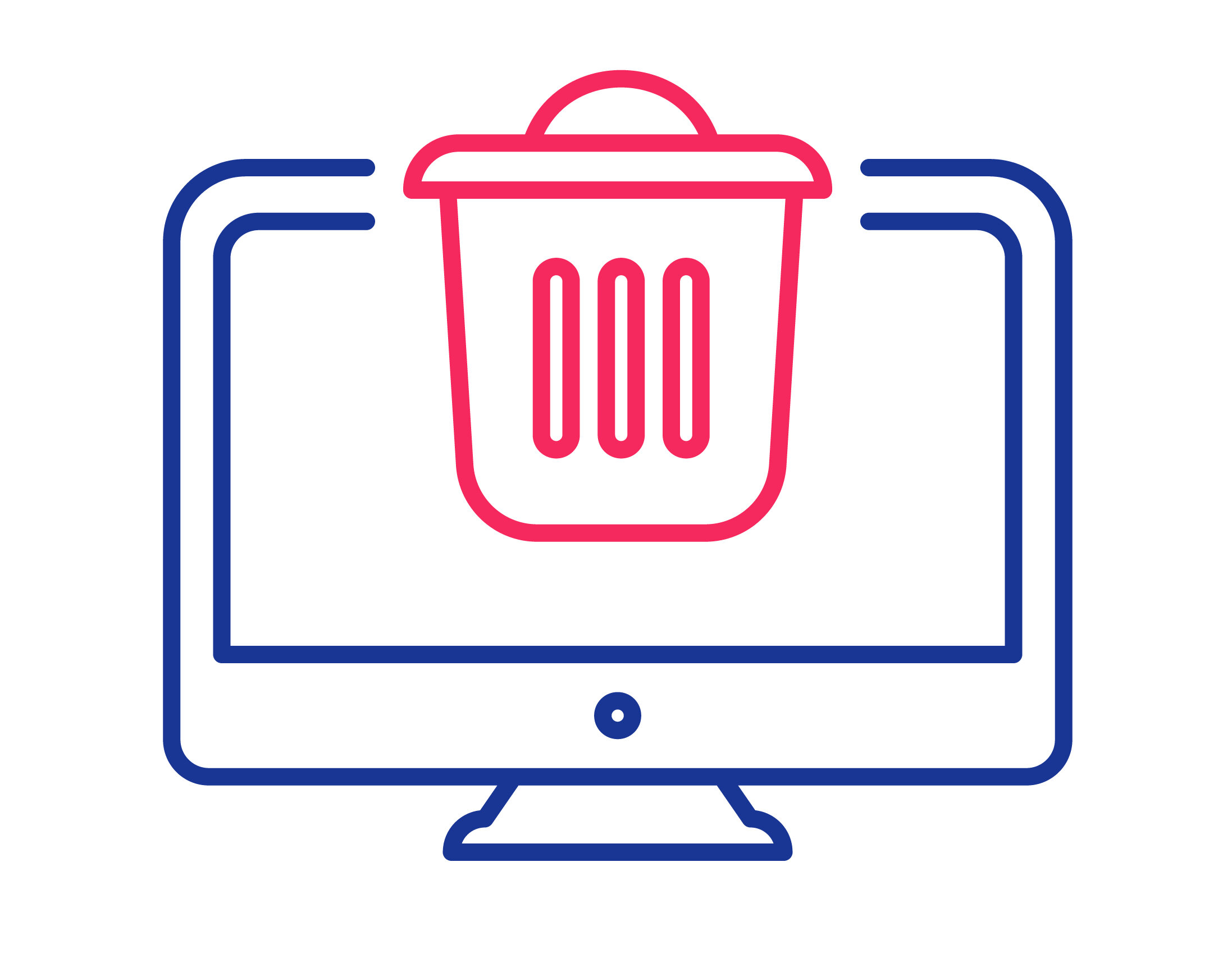The Recycle Bin, a fundamental component of the Windows operating system, serves as a virtual repository for deleted files, allowing users a safety net before permanent removal. Introduced by Microsoft in Windows 95, the Recycle Bin revolutionized the approach to file management, providing users with a safeguard against accidental deletions.
The nomenclature “Recycle Bin” draws an analogy to its real-world counterpart, emphasizing the concept of recycling digital content by offering users the chance to restore items previously discarded.
However, there’s an opinion that Microsoft decided to go with the “Recycle Bin” metaphor in response to the legal challenges from Apple, avoiding potential accusations of infringing on Apple’s “Trash” concept. That said, if it wasn’t for that conflict, the article might have been titled “How to Remove Trash Bin from Desktop” instead of its current designation.
Even though the Recycle Bin is a default feature on Windows desktops, there are users that choose to remove the Recycle Bin from the desktop for a cleaner layout, to free up some desktop space, or for security and privacy reasons in shared environments.
Also read: How to Manage Recycle Bin Storage Settings on Windows 10
How to Remove the Recycle Bin from the Desktop
If you find yourself wondering how to delete the Recycle Bin from the desktop, take a look at the solutions below.
Solution 1. Removing the Recycle Bin from the Desktop via the Settings
How to remove the Recycle Bin from the desktop on Windows 10:
- Right-click on the desktop and select “Personalize.”
- In the “Themes” category, click on “Desktop icon settings” under “Related Settings.”
- Deselect the “Recycle Bin” option, then click on “Apply.”
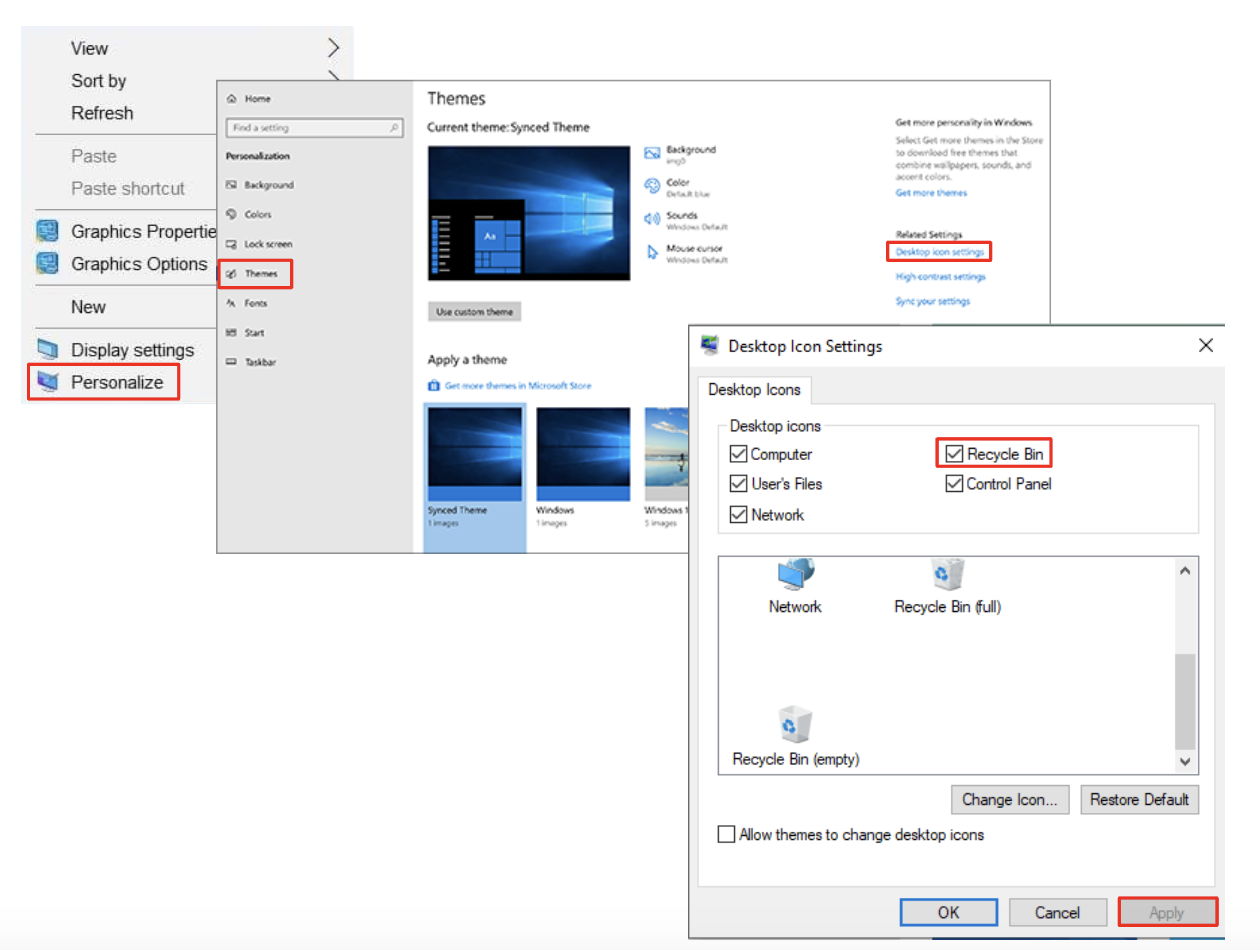
How to remove the Recycle Bin from the desktop on Windows 11:
- Use the Win + I keyboard shortcut to access Windows Settings.
- Choose “Personalization” and then select “Themes.”
- Choose “Desktop icon settings” within “Related settings.”
- Uncheck the “Recycle Bin” option and click “Apply” to remove it from the desktop on Windows 11.
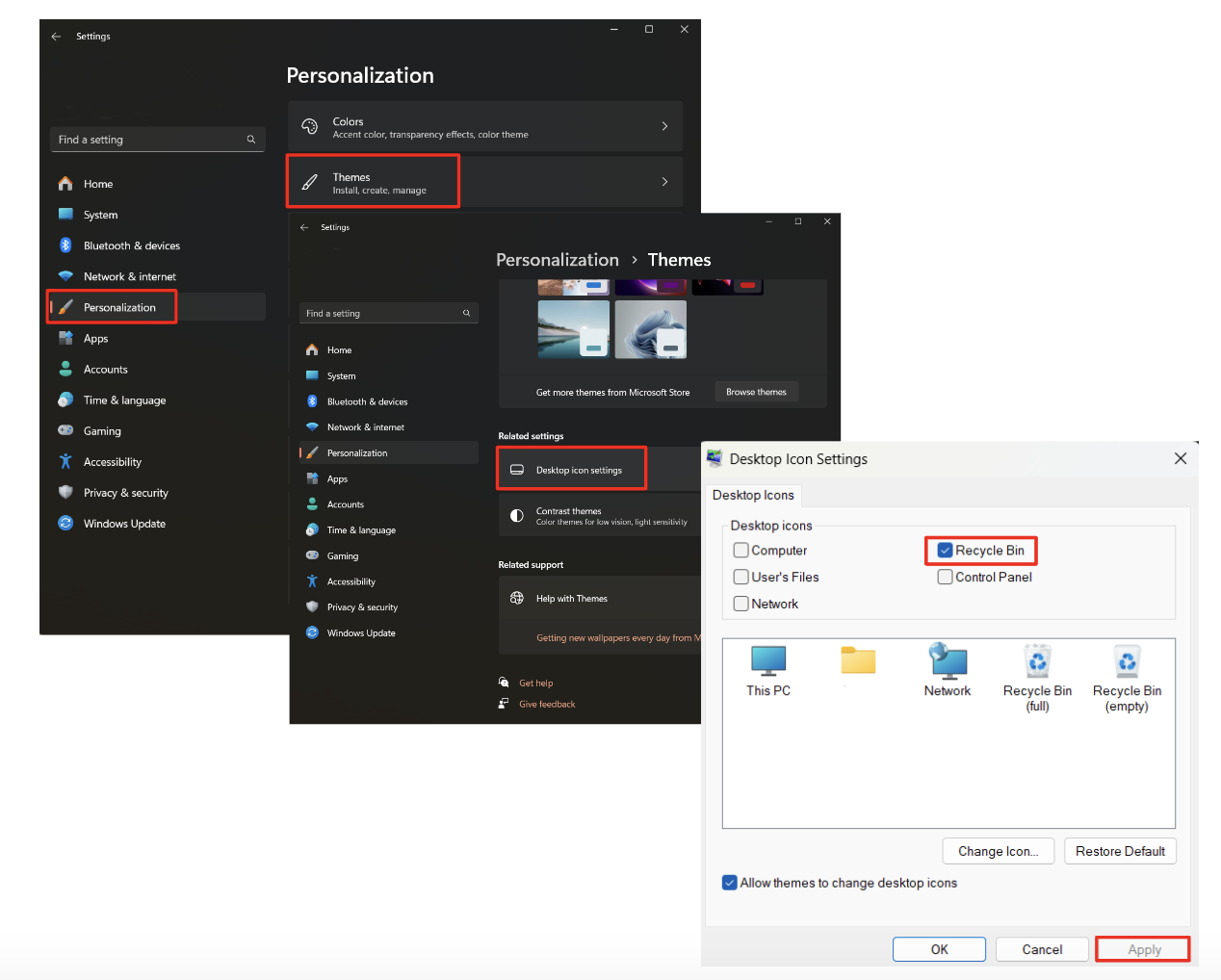
Solution 2. Removing the Recycle Bin from the Desktop via the Registry
Important: Before making any changes to the registry, ensure to back up your system to prevent potential data loss or system instability.
How to remove the Recycle Bin from the desktop via the Registry:
- Open the Run tool (Win + R) and type “regedit.”
- Navigate to:
HKEY_LOCAL_MACHINE\SOFTWARE\Microsoft\Windows\CurrentVersion\Explorer\Desktop\NameSpace. - Find and delete the key: 645FF040-5081-101B-9F08-00AA002F954E.
- Restart your computer.
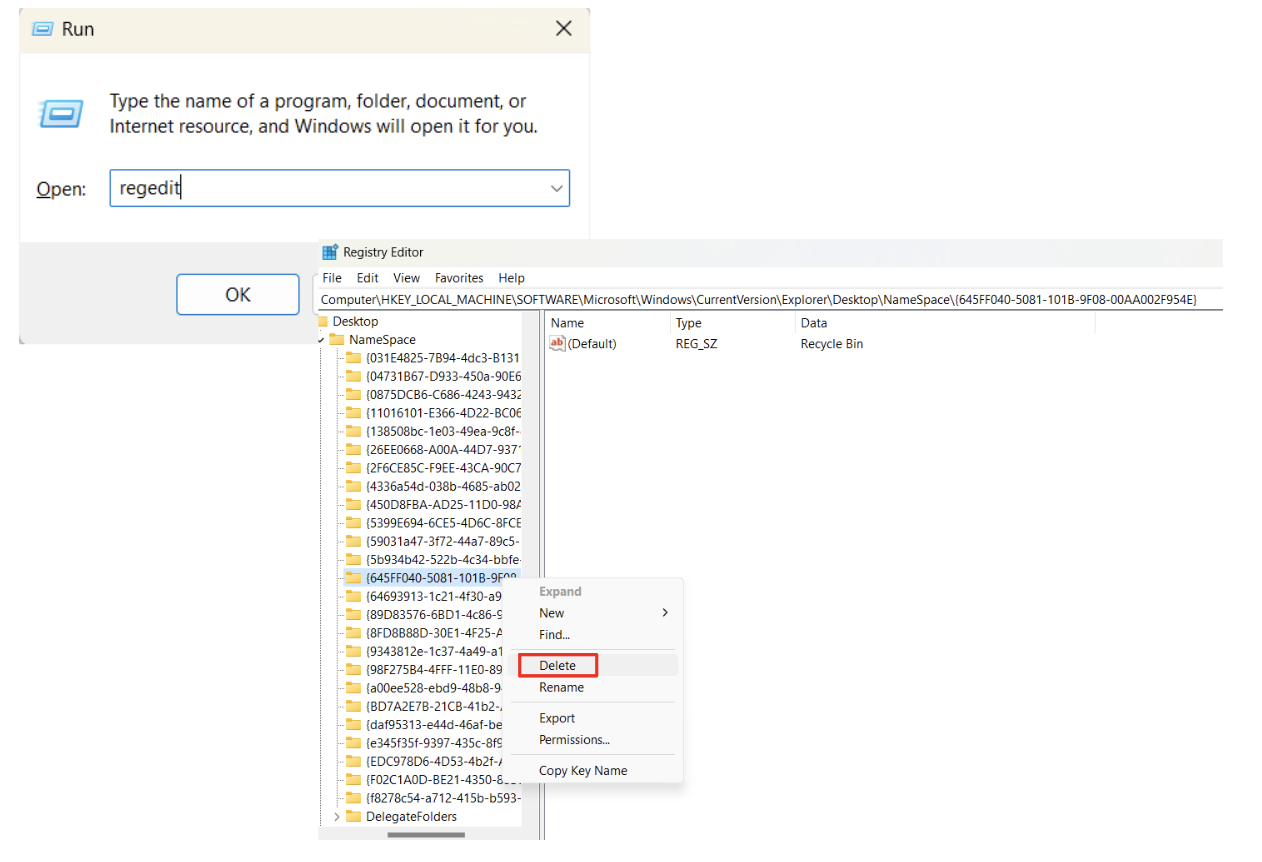
These two solutions are suitable for most users. If you’re still wondering how to remove the Recycle Bin from the desktop on Windows 11 or Windows 10 and happen to be a fortunate owner of the Pro version of the OS, the next one is for you.
Also read: Why Do You Need a Registry Cleaner?
Solution 3. Removing the Recycle Bin from the Desktop via the Local Group Policy Editor
How to get rid of the Recycle Bin on the desktop via the Local Group Policy Editor:
- Open the Run tool and type “gpedit.msc.”
- Navigate to “Administrative Templates” > “Desktop.”
- Double-click “Remove Recycle Bin icon from desktop” and enable it.
- Restart your computer.
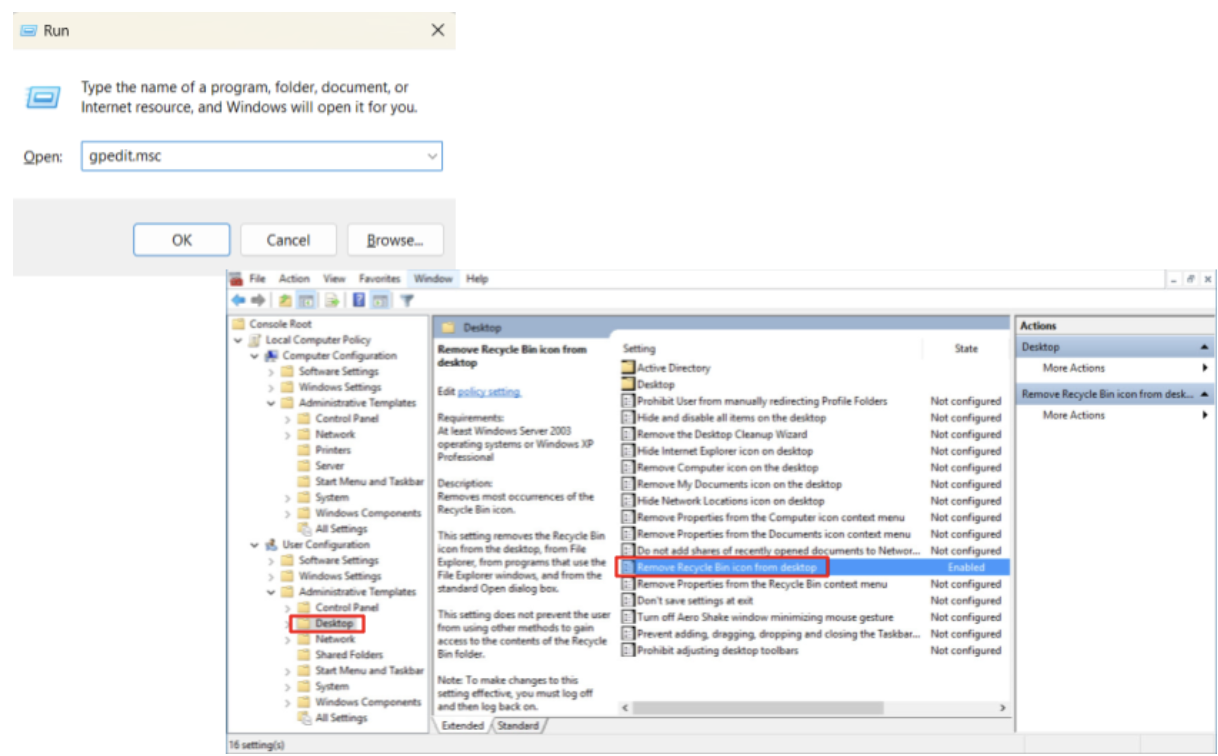
By implementing these straightforward steps on how to remove the Recycle Bin from the desktop on Windows 10 and Windows 11, you can tailor your digital workspace according to your preferences and optimize productivity.
How to Access the Recycle Bin After Its Removal
Now that you’ve learned how to get the Recycle Bin off the desktop and how to get rid of the Recycle Bin icon on Windows 10 and 11, it’s time to explore how to gain access to your deleted files after removing the Recycle Bin icon from your desktop. It still remains effortlessly achievable through File Explorer.
Take a look at the following approach to navigate to the Recycle Bin and retrieve your important data.
- Press the Windows key + E or click on the File Explorer icon in the taskbar to open File Explorer.
- On the left sidebar, click on “Desktop” under “This PC.” This will show the contents of your desktop.
- If the Recycle Bin is hidden, you might need to reveal hidden items. Click on the “View” tab in the File Explorer menu and check the “Hidden items” box.
- Navigate to your main drive and locate a folder named “$Recycle.Bin.”
- Double-click on it to access the Recycle Bin contents. Here, you’ll find folders corresponding to different user profiles, each containing deleted files.

Also read: Windows File Explorer Not Responding? Try These Solutions
How to Recover Deleted Files
In the dynamic world of digital data, accidental deletions can be a common occurrence. After discovering how to remove the Recycle Bin from the desktop on Windows 11 and Windows 10 systems and how to regain access to the Recycle Bin, we invite you to explore the robust capabilities of Auslogics File Recovery to effortlessly retrieve accidentally deleted files.
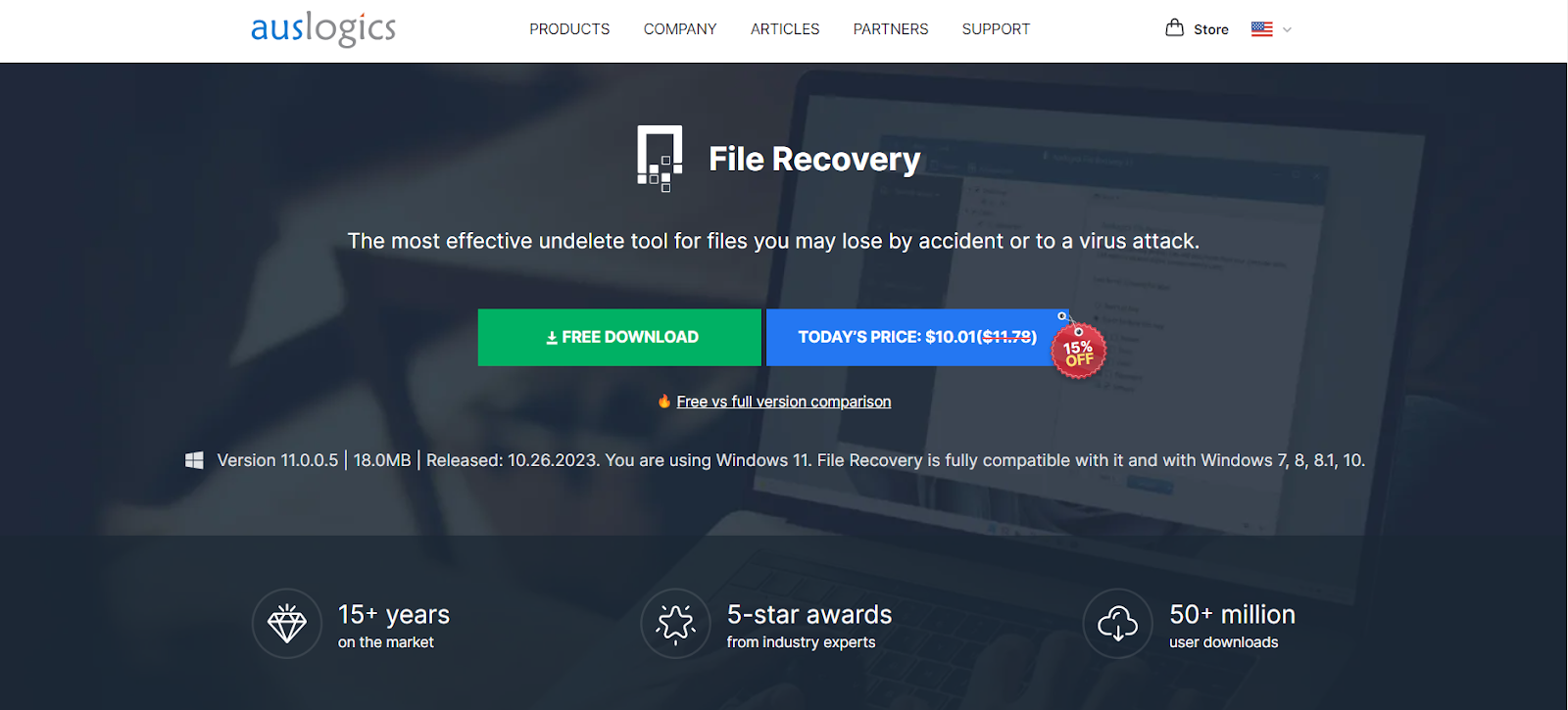
This reliable tool employs advanced algorithms to scan and recover lost data from various storage devices. It also provides other features like recovering files from lost partitions, file shredding, advanced sorting, and disc image creation.
Also read: How to Fix Deleted Files Not Showing Up in the Recycle Bin
Conclusion
In this guide we’ve explored how to remove the Recycle Bin from the desktop on Windows 10 and 11 and find the Recycle Bin after deleting its icon.
Whether customizing your desktop layout or retrieving accidentally deleted files, following simple step-by-step instructions provided in this article and leveraging powerful tools like Auslogics File Recovery ensures an efficient PC experience and confidence in navigating the Windows environment.
FAQ
Where Is the Recycle Bin in Windows 10?
By default, the Recycle Bin is in the upper-left corner of your desktop. You can also find it in the $Recycle.Bin folder on your main drive.
How to Change the Recycle Bin Icon?
Navigate to “Desktop icon settings” in the “Themes” category of Personalization settings to customize your Recycle Bin icon.
How to Find the Recycle Bin in Windows 10?
The Recycle Bin is located in the $Recycle.Bin folder on your main drive. If you can’t see the folder, click on the “View” tab and check the “Hidden items” box to reveal hidden files and folders.
How to See the Hidden Recycle Bin Folder in Windows 10?
To reveal the hidden Recycle Bin folder in Windows 10, open File Explorer, click on the “View” tab, and check the “Hidden items” box. This action will display the $Recycle.Bin folder.



